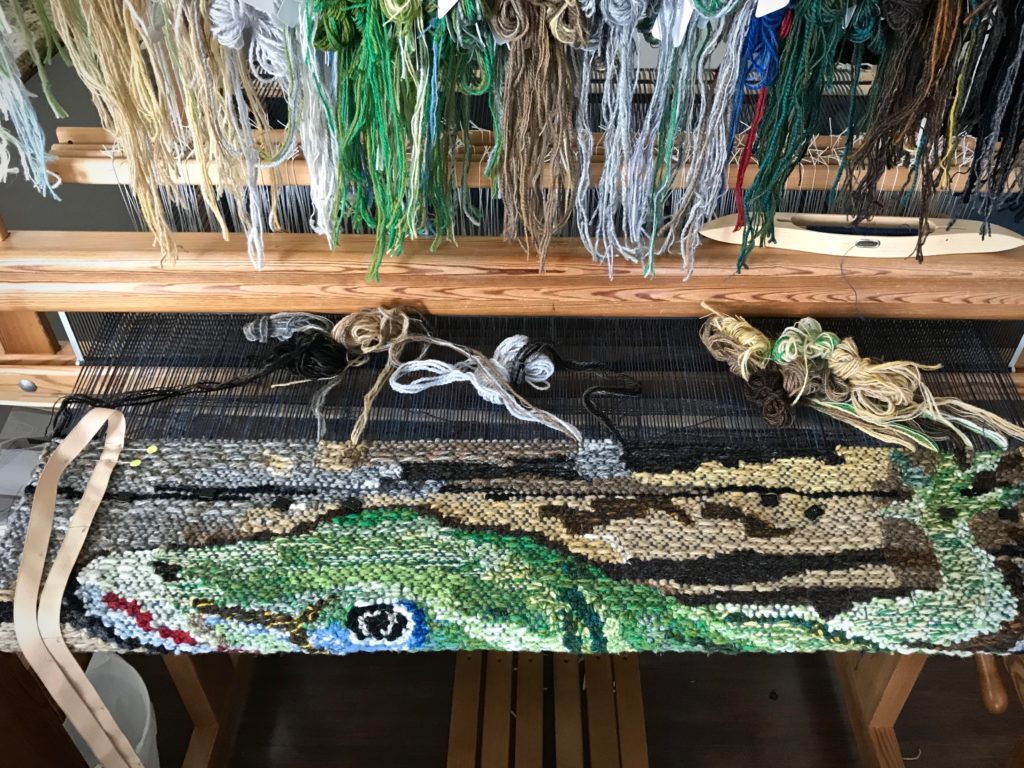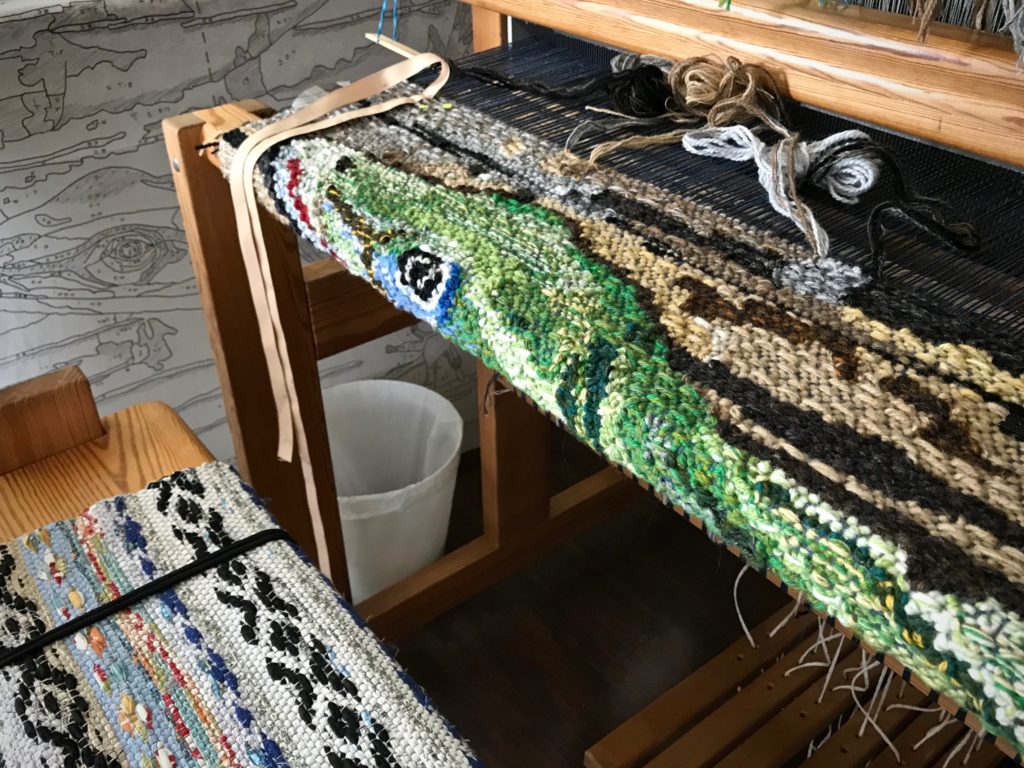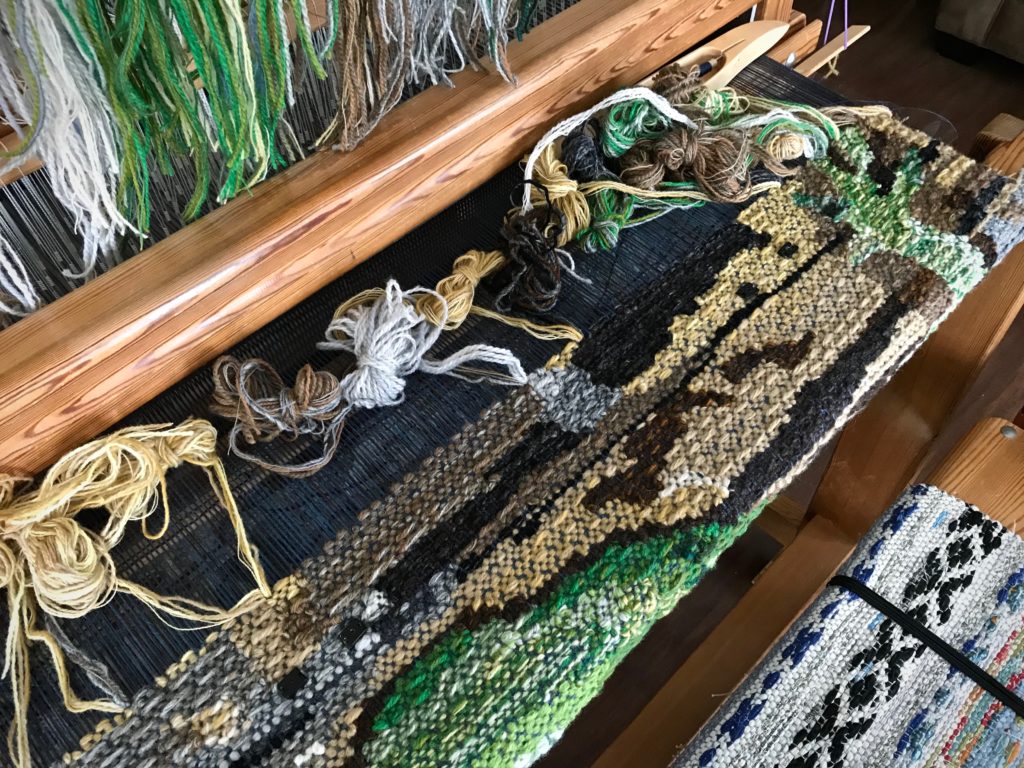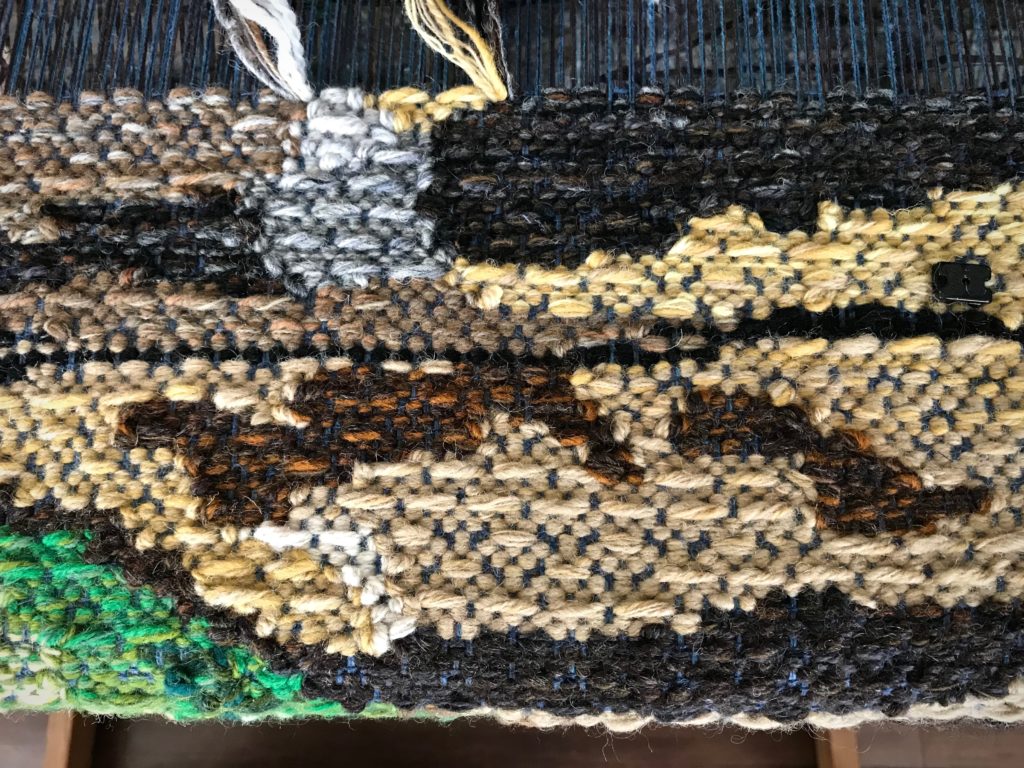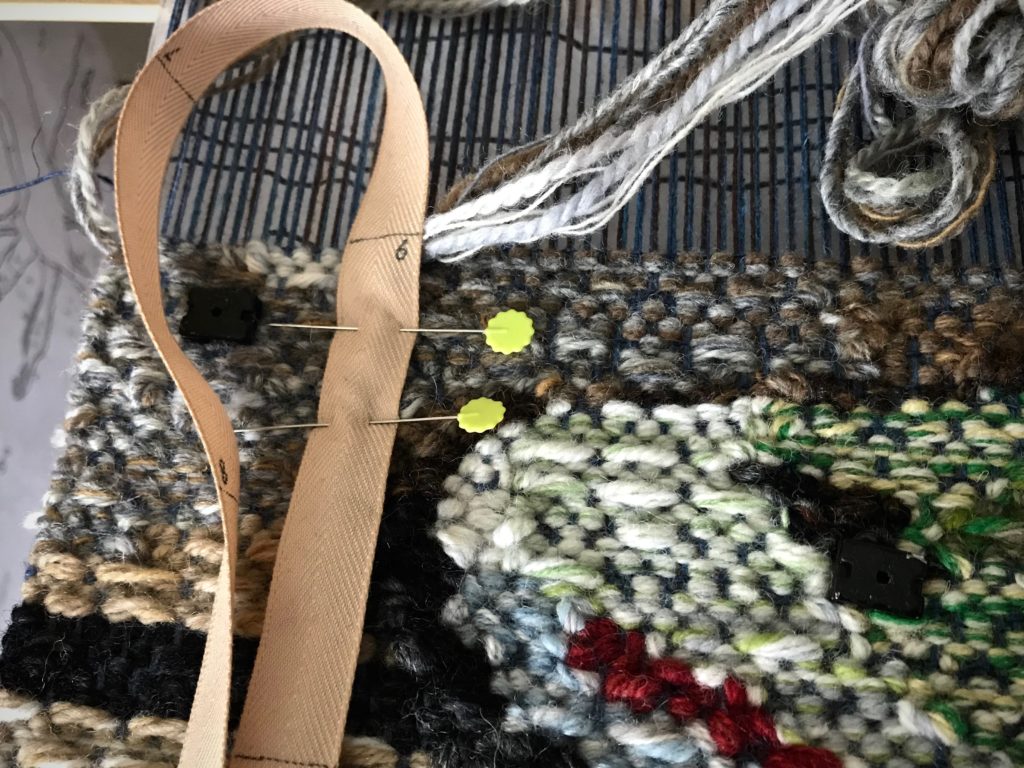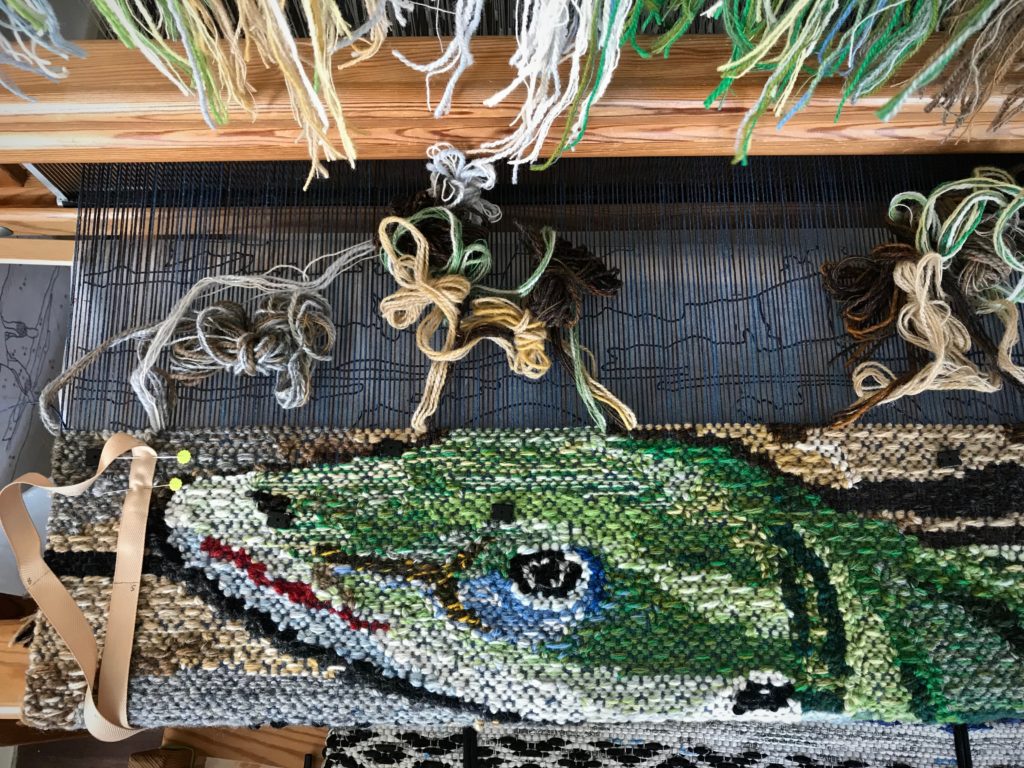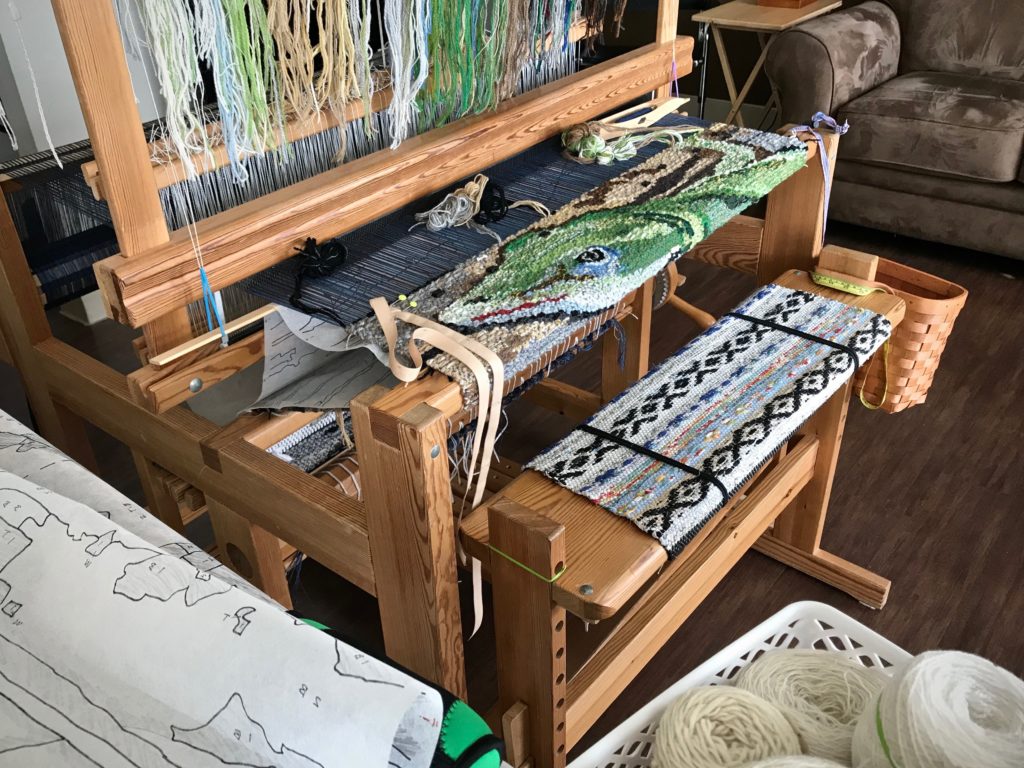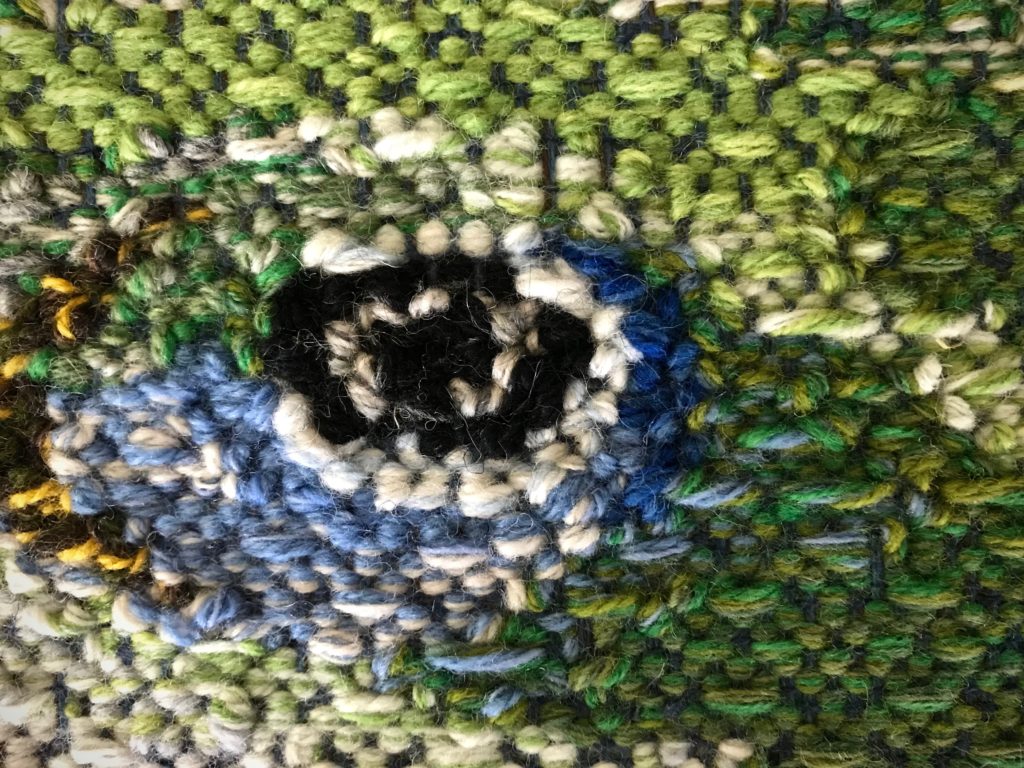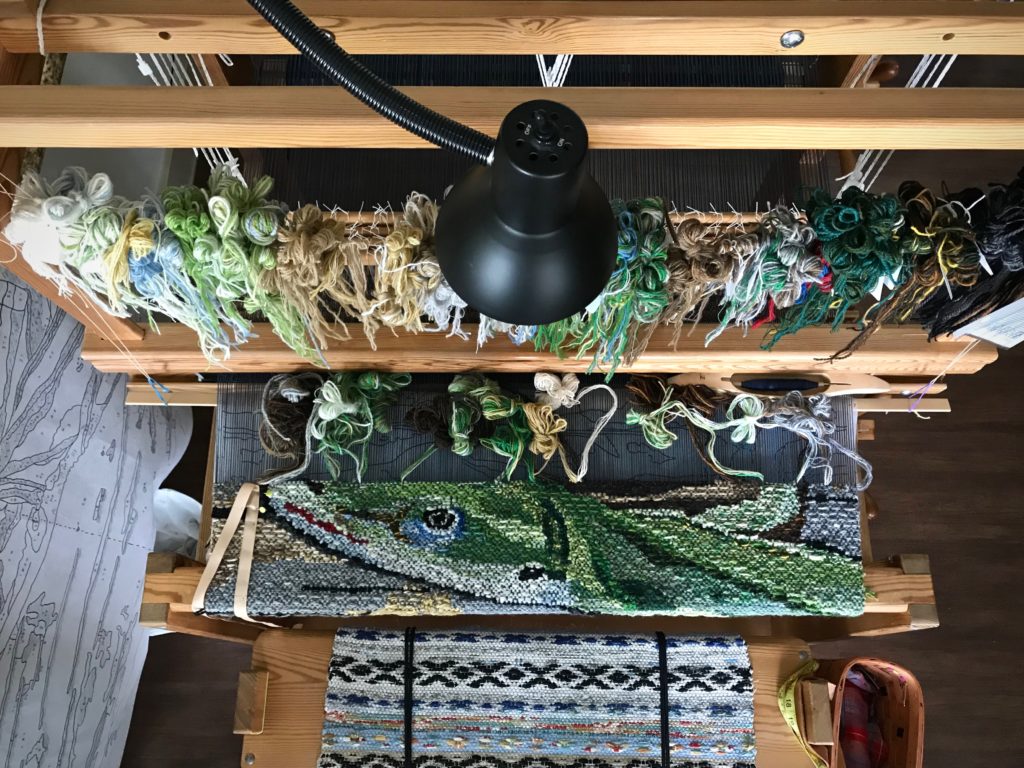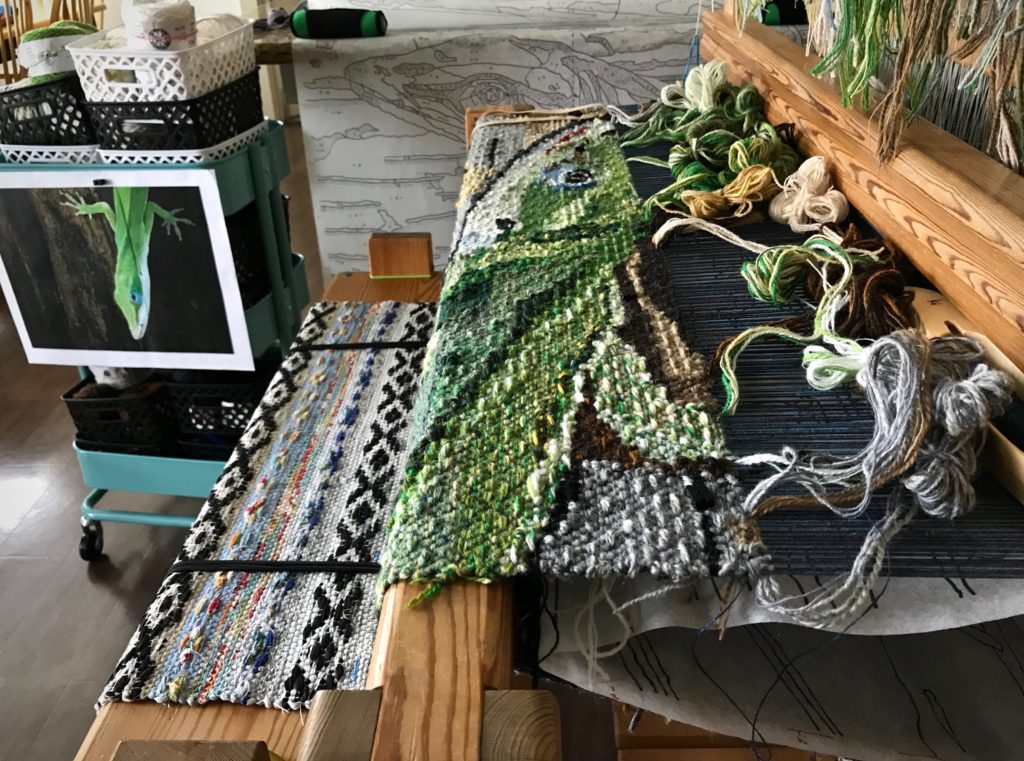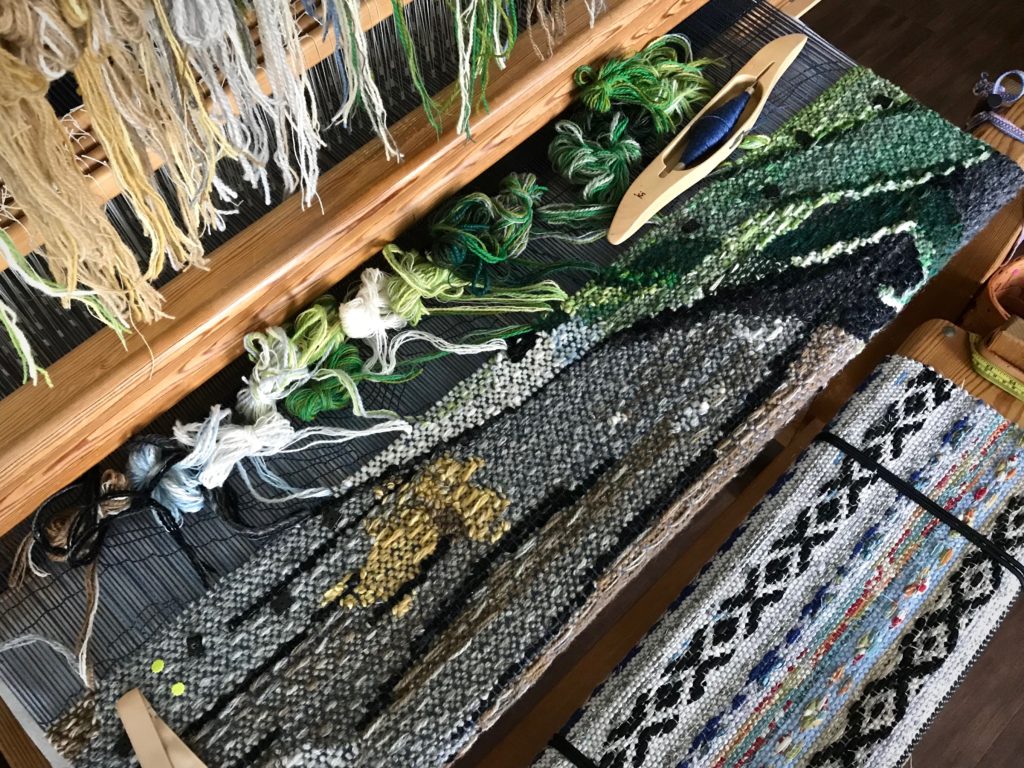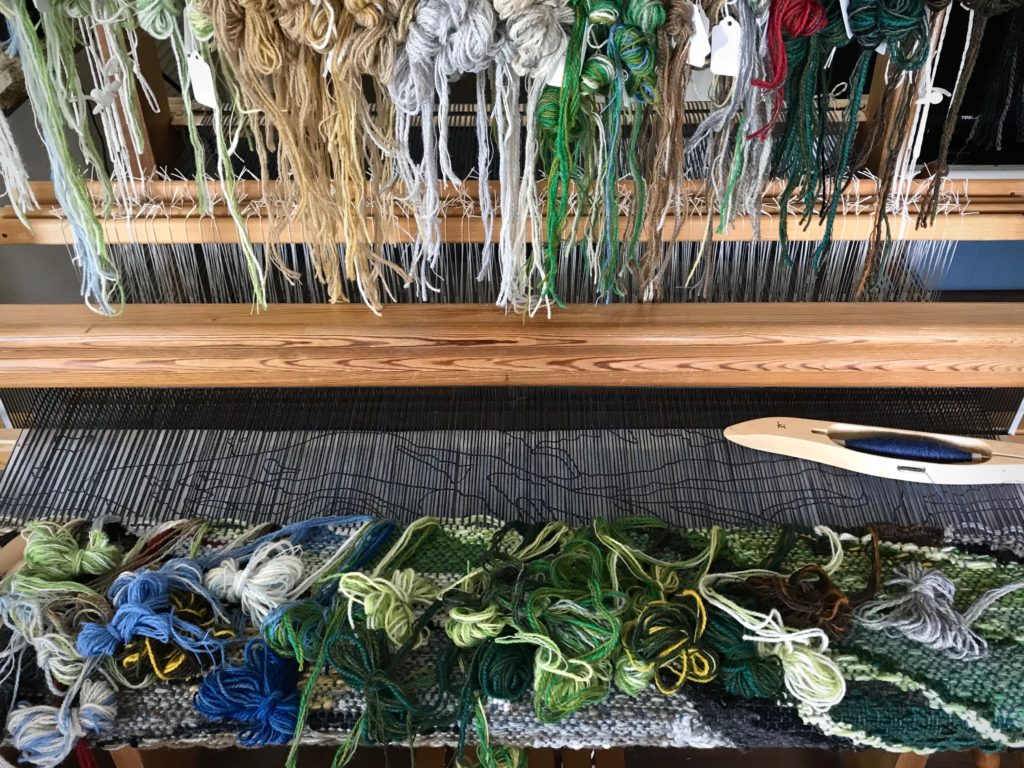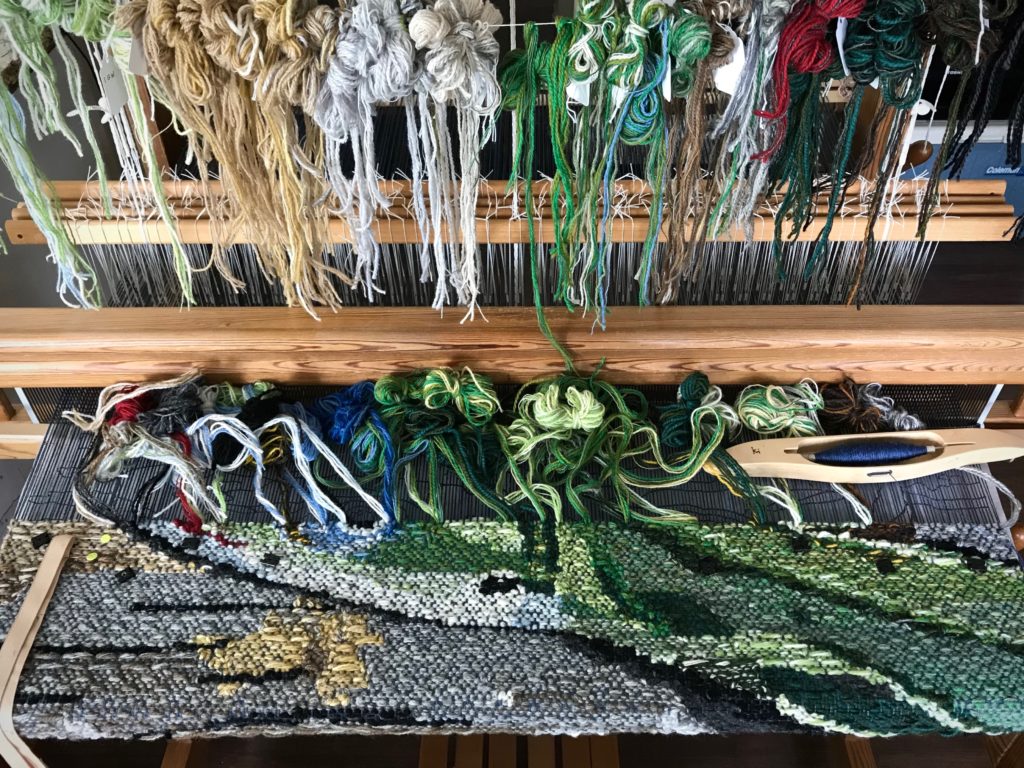I am determined to have this off the loom before it’s time to move again. I know exactly how many “weaving days” I have left in this apartment. Steve’s retirement is just around the corner. His last day at work will be our last day here. And I know exactly how many centimeters I have left to weave on this piece. We already moved the loom once in the middle of this tapestry. Once is enough! I intend to make significant weaving progress every single day.
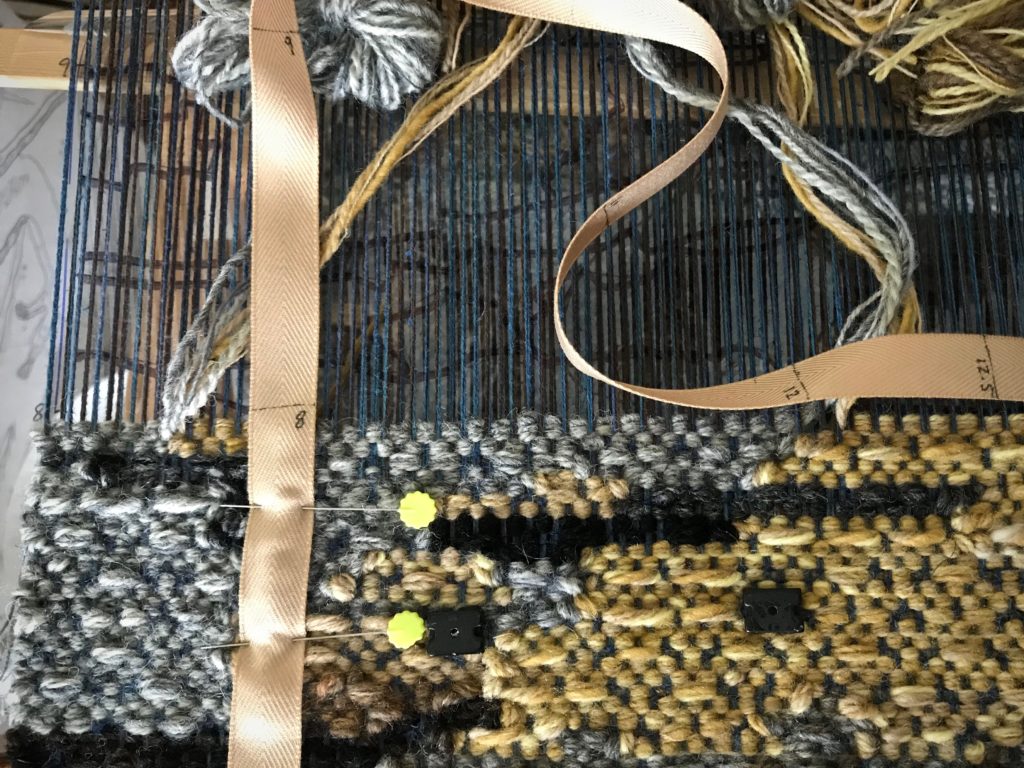
Now that the image of the lizard is finished all the way to his toes, no more pretty green, blue, or red butterflies. I am removing anything that clutters my focus. Full (snail) speed ahead!
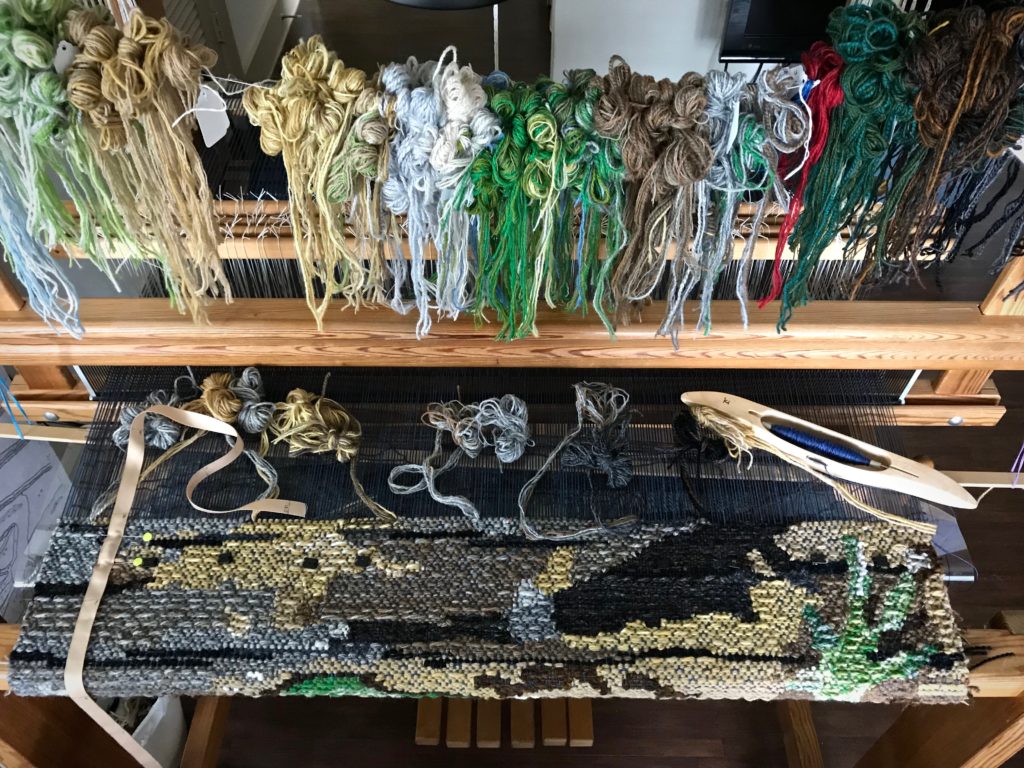
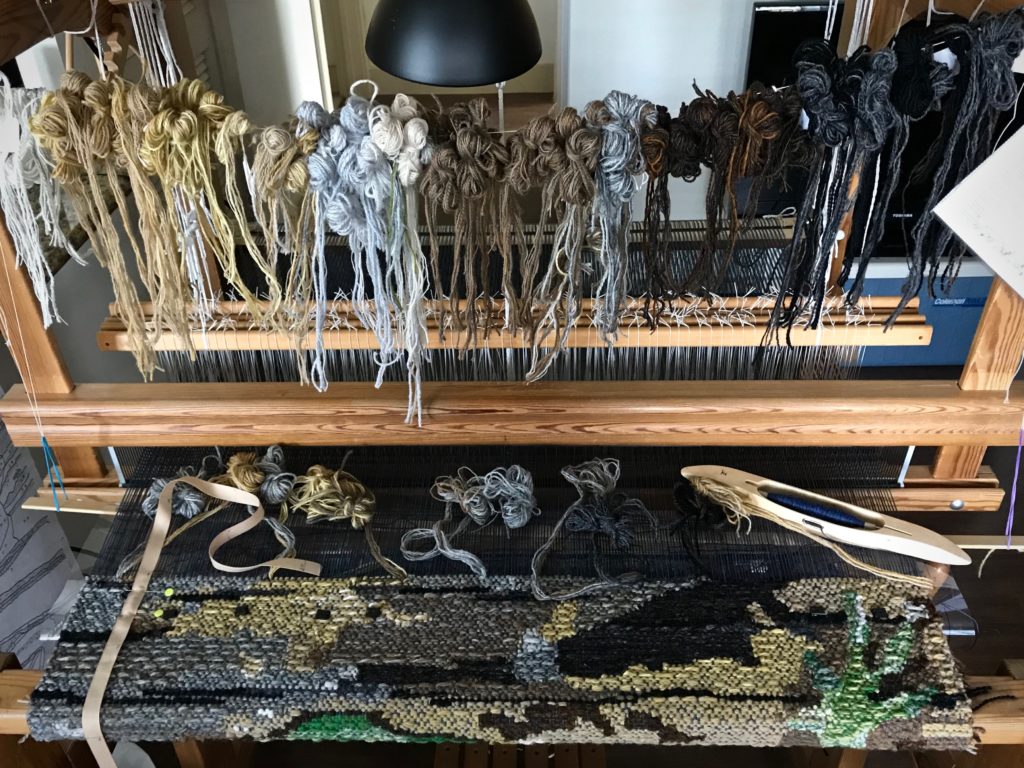
Faith is that kind of determination. Faith is more than thinking you believe something or someone. It’s pouring yourself into pure-hearted focus to trust fully in God. Faith is being so convinced that Jesus is the answer that you will stop at nothing to reach him. Where there’s that kind of will, there’s a way.
May you reach your most-pressing goal.
Your speedy snail,
Karen

